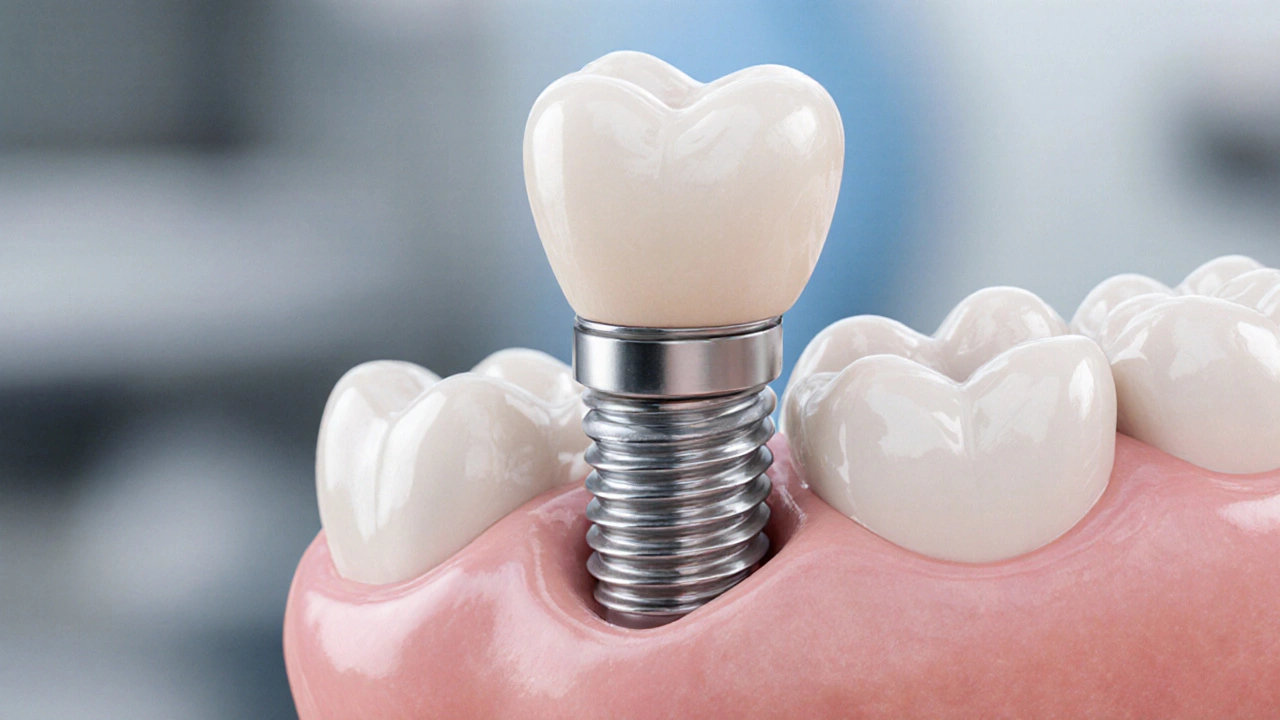Tooth Implant Durability: What Really Keeps an Implant Strong
When discussing tooth implant durability, the ability of a dental implant to stay stable and functional over many years. Also known as implant longevity, it matters to anyone who wants a lasting smile. In the same breath, dental implants, artificial tooth roots placed into the jawbone to support crowns or bridges rely heavily on bone integration, the process where bone cells grow around the implant surface, creating a firm bond. The choice of implant material, usually titanium or zirconia, determines how well the body accepts the implant and how resistant it is to wear is another key piece of the puzzle.
Key Factors That Shape Implant Longevity
First up, the material itself. Titanium has a proven track record because it forms a natural oxide layer that encourages bone cells to attach. Zirconia offers a metal‑free option and looks whiter, but it can be more brittle if not properly engineered. Surface treatments—like sandblasting or laser‑texturing—create microscopic ridges that boost bone integration. In short, tooth implant durability encompasses material quality, surface texture, and the type of implant‑abutment connection.
Next, the patient's own biology plays a huge role. Good bone density provides a solid foundation, while conditions like osteoporosis or uncontrolled diabetes can slow healing. Smoking narrows blood vessels, cutting off nutrients that the bone needs to fuse with the implant. Oral hygiene is non‑negotiable: plaque buildup can lead to peri‑implantitis, an infection that weakens the anchor. These health factors directly influence the success rate of the implant over a decade or more.
Then comes the surgical technique. Precision drilling at the right speed, using guided implant surgery, reduces trauma to surrounding bone. Immediate loading—attaching a temporary crown right after placement—works for some patients but can jeopardize durability if the bone hasn't had time to adapt. Delayed loading gives the bone a chance to integrate fully, often leading to higher long‑term survival rates.
After the surgery, maintenance habits seal the deal. Regular dental check‑ups let the dentist catch early signs of inflammation. Using a soft‑bristled brush and floss designed for implants keeps the seal around the crown clean. Some professionals recommend chlorhexidine rinses for the first few weeks to curb bacterial growth. Consistent care keeps the bond between bone and implant strong, extending its functional life.
Success metrics matter when you weigh options. Studies show a 95%‑plus survival rate for titanium implants at ten years, while zirconia hovers around 90% in similar conditions. Failure usually shows up as loosening, pain, or visible bone loss on X‑ray. Knowing these numbers helps patients set realistic expectations and choose the right protocol for their lifestyle.
Emerging technologies are pushing the envelope further. Nanocoatings that release antimicrobial agents aim to prevent infection right at the surface. Hybrid implants combine titanium cores with zirconia crowns for the best of both worlds—strength and aesthetics. Digital workflow, from 3D imaging to CAD/CAM‑crafted abutments, increases fit precision, which in turn supports durability.
Cost is often a concern, but durability can actually save money in the long run. Replacing a failed implant can cost twice as much as a well‑planned, durable one. Investing in high‑quality material and skilled placement reduces the likelihood of future expenses and the hassle of additional surgeries.
When problems arise, early intervention is key. Small pockets of infection can be treated with antibiotics and deep cleaning, avoiding the need for full removal. If the implant has truly lost its bond to the bone, a guided bone regeneration procedure can sometimes salvage it, but success rates drop sharply after a certain point.
All these pieces—material choice, patient health, surgical precision, after‑care, and tech advances—interlock to define how long an implant will last. Understanding each factor helps you ask the right questions and make informed decisions about your dental health.
Below you’ll find a curated set of articles that dive deeper into each of these topics, from material science to practical maintenance tips, giving you a complete picture of what influences tooth implant durability.
How Long Do Dental Implants Last? Lifespan, Care & Costs Explained
Discover how long dental implants truly last, the factors that affect their lifespan, and practical tips to keep them healthy for decades.

